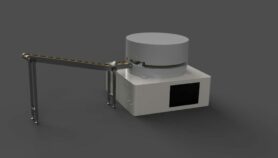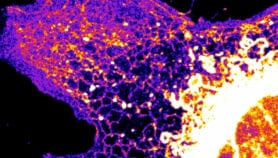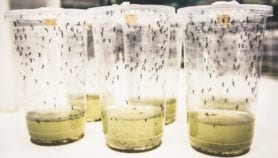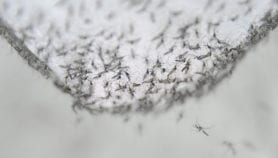By: Hazem Badr
Send to a friend
The details you provide on this page will not be used to send unsolicited email, and will not be sold to a 3rd party. See privacy policy.
[CAIRO] Egyptian researchers claim to have found a cheap, easy method for detecting and clearing landmines, using plants and bacteria.
However, some experts are sceptical about the method, which they say faces major practical obstacles.
The three-stage process for deactivating anti-personnel mines — landmines designed for use against humans — first detects the mine before corroding its cast-iron body and, finally, neutralising it.
The Academy of Scientific Research and Technology (ASRT), the government body responsible for funding research in Egypt, announced last month (18 January) that it will fund large-scale trials on the north coast of Egypt, after the technique proved successful in laboratory tests. It is awaiting approval from the armed forces to do so.
"We investigated the technique for almost a year before approving large-scale experiments," Abdelsalam Gomaa, a member of the ASRT committee responsible for approving funds for agricultural research, told SciDev.Net.
A.M. Abou-Dahab, professor of ornamental horticulture at Cairo University and lead researcher, said that the first step of the method was developed in March 2004 by Aresa Biodetection, Danish biotechnology company.
The researchers plan to enlist the help of the airforce to sow these plant seeds on around 700 acres of land infested with landmines.
The next two steps in the deactivation method are based on new findings.
Once the plants have indicated the presence of landmines, the researchers propose introducing iron-loving bacteria that will make small holes in the iron body of the landmines, allowing gas from the degrading trinitrotoluene (TNT) explosive to be released.
The final step is to plant either Vinca rosea (rose periwinkle), sugar beet, or tobacco plants in the area. The roots of all three contain enzymes that absorb nitrogen, which is a component of the TNT. This absorption should deactivate the landmine.
Richard Boulter, programme manager in Cambodia for the Halo Trust — a charity specialising in the removal of hazardous war debris — was critical of the method.
"Birds will eat the seeds … even if germination occurs, how do you stop animals from eating the plants? The method also makes the assumption that TNT seeps out. It doesn’t."
But Abou-Dahab said there are few birds in the area where they are testing their method and it is guarded so animals cannot enter.
Sean Sutton, a spokesperson for the UK-based Mines Advisory Group, said: "I wouldn’t want to discount this new idea, but we just don’t know until we’ve tried it. It does sound far-fetched."













